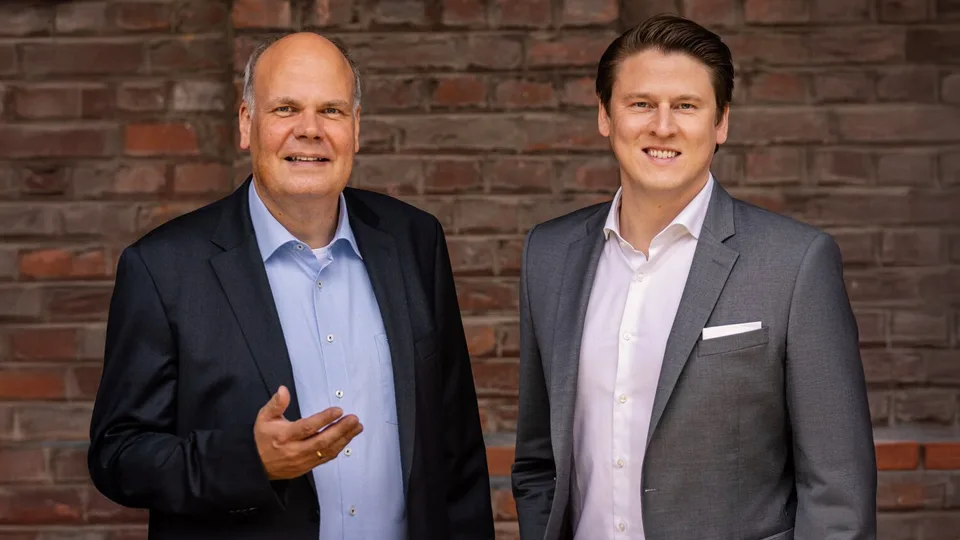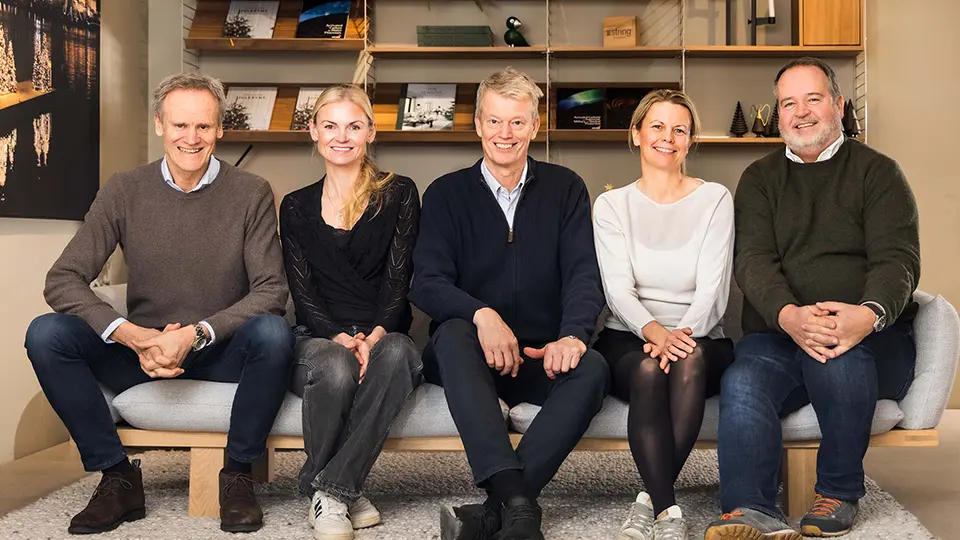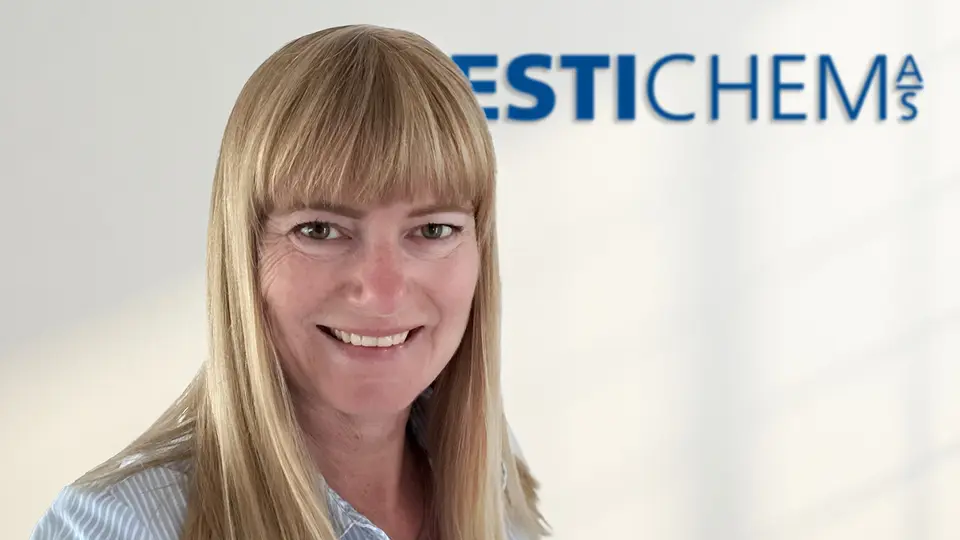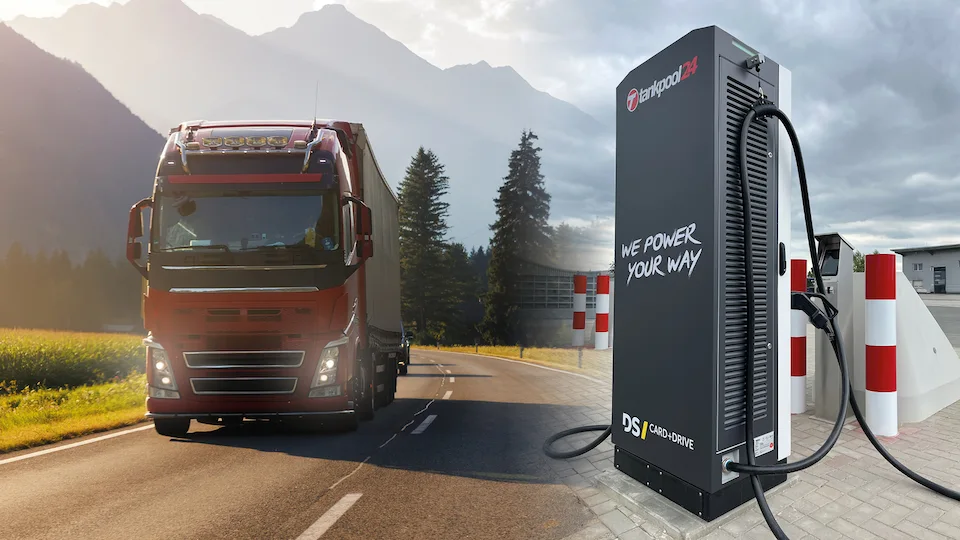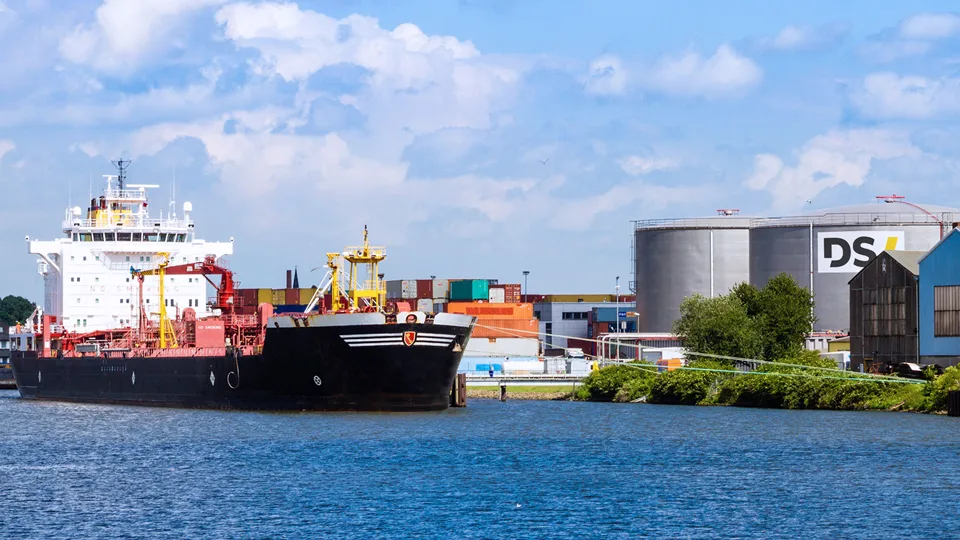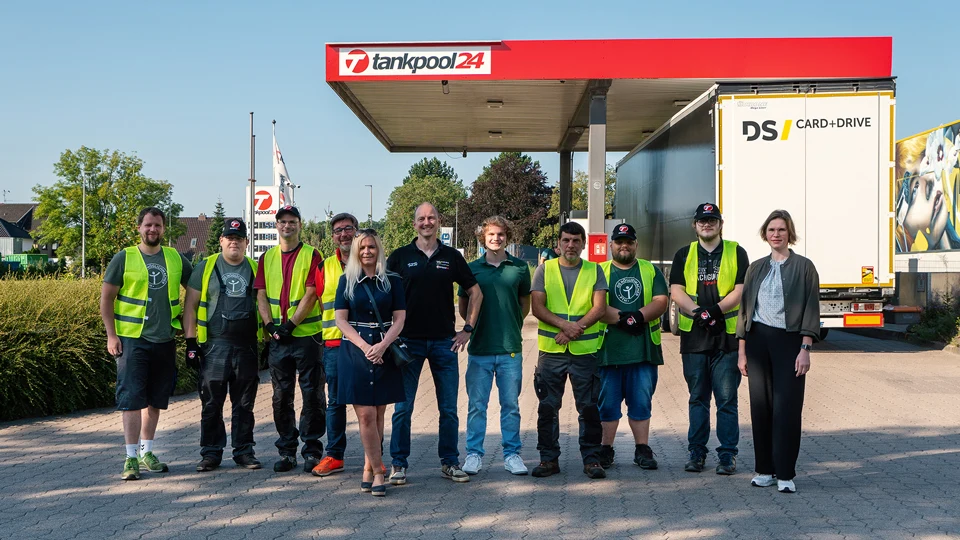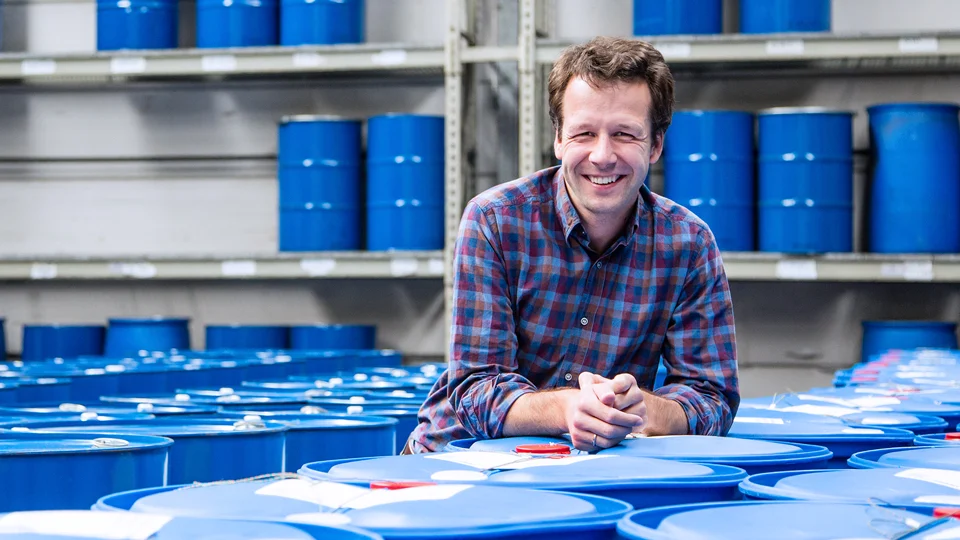Mr. Mühlenberg, what prompted LEVACO to address the topic of sustainability?
We have had sustainability on our agenda for quite some time out of a sense of responsibility. However, with growing awareness of greenhouse effects and the climate crisis, we began to consciously and strategically consider what sustainability actually means for a chemical company like ours. What is our CO2 footprint? How can we implement sustainability in the organization? These considerations and activities culminated in our first sustainability report in 2015, giving the whole initiative a foundation and structure to start with.
Our next step, which we are currently taking, is further development at the product level towards more sustainable and truly ‘green’ products. Here, as a company, we can make a real and positive contribution, both fundamentally for the economy and from our ethical responsibility. Our biggest trigger for sustainability is therefore that we feel an ethical-moral obligation and also the fact that countless approval procedures are currently running in Brussels that will hold us accountable as an industrial company in the future. Given today’s challenges regarding the climate crisis, we can and want to make a contribution. Of course, we need to put this in a business context and achieve economic success with ‘green’ products.
What does sustainability management at LEVACO encompass?
We have two work packages regarding sustainability: One is the topic of CO2 neutrality. As a chemical operation, we emit CO2 through our energy consumption in production, through transport, etc. We will reduce these emissions through compensation and the most efficient use of available energy possible. This also implements investments in more energy-efficient facilities. The second work package is green chemistry. This involves screening our products to see which components of individual products we can replace to make the products greener or even completely green. Ideally, this happens with the same performance or even better.
The efforts we undertake in this area naturally cost money and resources. We have to research, purchase sustainable products that are sometimes more expensive than their synthetic counterparts, and invest a lot of brainpower and resources to make everything fit. Therefore, we always check beforehand whether there is a market for the relevant products. Our efforts must be backed by market demand. At the same time, as an agile, medium-sized company, we try to gain a competitive advantage over the big players in the market by providing added value for our customers with great flexibility in the development of green products and placing them profitably. This way, we kill two birds with one stone: We make a contribution to a sustainable economy and use the whole thing profitably for ourselves.
Do you notice that your customers are willing to pay higher prices for sustainable products?
It depends a bit on the end-customer market in which we operate. LEVACO serves the agricultural industry, the coating sector, i.e., paints and varnishes, the fiber, food, and paper industries. In addition, we produce as a contract manufacturer for partners from the broad world of the chemical industry. All these end-customer markets are different. We notice that the demand for green products in the individual areas is very different, which makes the topic very complex. There are rather conservative markets where the topic of organic products and organic alternatives is of interest but still future music. In the food market, for example, there is already a growing demand for green products. For instance, we already supply a certified organic defoamer to the sugar industry. Basically, the topic is no longer unthinkable, because on the one hand, our customers want to know how they can evaluate us on the supplier side in terms of sustainability, and on the other hand, there are concrete, larger commercial demands and growing markets where sustainability and the corresponding certifications are becoming increasingly important.
Where do you see advantages and opportunities for medium-sized businesses compared to the big players in the market?
We benchmark ourselves against the big players to find orientation for the path we want to take. In doing so, we realize that our efforts in our field of activity are quite at the forefront. Especially at the product level, we are much more agile and flexible than many large companies because our paths are shorter and processes function faster. This is particularly noticeable in the area of Green Chemicals. As a medium-sized company, we can respond incredibly quickly to customer requests when there’s a desire to receive a product that is green or at least greener. The goal is clear: to focus more strongly on our unique selling proposition in the market, which is fundamentally speed, flexibility, and agility, especially in the area of green products.
Would you describe this flexible, customer-oriented approach as your ‘license to grow’?
Absolutely. This is our market raison d’être. In the chemical areas we cover, we have extensive know-how in production and development. But that alone doesn’t help in the long run. If we weren’t faster, more flexible, and more agile than the big players, who naturally have much larger resources than we do, especially in the development area, we wouldn’t be able to achieve the economic results we’re achieving now and want to achieve in the future.
That’s why we run major programs in which we constantly analyze and evaluate our processes for efficiency, with the goal of acting as flexibly and quickly as possible for customers. So we focus on customers in every respect, and every business area must align with the needs of the end customers.
What insights have you gained from your steps so far?
That we are far from reaching the end of the line! At the beginning, we found that the more we delve into the topic, the more complex it becomes, because the path is not straightforward. There is no one solution for all. But that’s also an insight. Our realization that there is no global certification for all business lines has led us to the understanding that we need to look at the customer level to see what end customers need in different markets. We are now examining our products in this regard. This by no means implies that we can already offer our entire portfolio with green alternatives. But we have a better idea of how to proceed. It’s an ongoing project for which we continuously optimize our strategy, also by engaging in dialogue with associations, our customers and suppliers, and exchanging ideas at conferences.
How have you defined your main areas of work?
We have launched a future program called ‘Levaco 2025’, which addresses four project areas.
All four topics are equally important to us for long-term company success. Sustainability plays a crucial role at the highest level, just like growth, process optimization, and our corporate culture. With this transformation process, we’re not aiming to turn Levaco inside out, but to adapt to current conditions and market trends and position ourselves for the future. This is one of the strategic core points for the coming years.
For us, sustainability is on the same level as our growth goals, because it is just as important for future success. We must and want to address this proactively, and we want to do it successfully.
I believe that there is a great danger for those companies that neglect the issue of sustainability to eventually run into problems in the market. The requirements for companies are now so extensive that they affect the entire economy. It’s about transport, sustainable supply chains, it’s fundamentally about the CO2 footprint of production and processes, energy consumption, new business models, and so on. Companies must react flexibly to these new requirements and regulations. If done really well, this can open new doors and generate profits in new growth areas. Who should be better at this than the flexible medium-sized businesses?
The contribution may be small at the company level, but we all need to do our part. We at Levaco want to make this contribution, and we want to do it so smartly that we can also use it profitably for ourselves.
To some extent, this is also the entrepreneurial thinking that distinguishes us in the DS Group: Always finding solutions, no matter what comes.
Absolutely. Burying your head in the sand doesn’t help. There are certainly regulatory requirements for medium-sized companies that make you wonder: Is this necessary? However, when it comes to sustainability, the basic idea is quite tangible. The mandate for companies is obvious. The difficulty lies in the fact that, as of today, there are few legal frameworks to guide us.
It’s important that the transformation happens in harmony with business and politics. The economy must have a say and be able to help shape it. I believe there are few companies that don’t find the basic requirements sensible. It’s more about the fear that they might not be manageable, especially when it comes to global requirements. Here, I trust in politics and national and international associations to ensure that the whole process happens in cooperation with the innovatively thinking mid-sized businesses.
Innovative thinking is a great keyword. For sustainable change, we need new, innovative solutions in the economy. Do you have specific programs at Levaco to promote innovation?
We have always invested a large portion of our resources in research and development because that’s how we define ourselves. Our strategy is to continuously specialize further. We come from the field of contract manufacturing and have established ourselves in various end-consumer markets over the past years. This hasn’t happened with commodity products, but through the development of specialties, i.e., highly specialized, individual solutions. We know we can place these profitably in the market because they offer real added value to our customers. Accordingly, innovation and R&D are crucial pillars for us because here – again compared to the big players – our scope is larger to successfully design these solutions together with our customers. We have very creative, specialized people in the laboratory who focus on innovation every day anew. At the same time, competent employees in sales work closely with customers and listen to what the market needs. This is exactly what happens with sustainability as well. We work together with partner companies and customers, translate the needs in our R&D department, and look to create a symbiosis between customer demand and innovative, highly specialized, sustainable products.
You’ve just incidentally answered my question about the success factors in the industry…
(laughs) In principle, we have to reinvent ourselves every month in terms of production. Of course, there are products that have been in our portfolio for ages. Nevertheless, we find that every year we successfully place new products in the market that have a significantly larger share over time. The requirements for products simply change at regular intervals. Similarly, the challenges in the market redefine themselves regularly. You have to invest in research and development to be able to survive in the market long-term.
Are innovation and sustainability top-down issues or do they happen more bottom-up from the workforce?
It absolutely happens in interaction. We promote a corporate environment where every employee can make an impact in their area. The colleagues who deal with their subject matter 365 days a year in the business units know their area best. Accordingly, as management, we encourage innovations and optimization suggestions to be communicated and implemented from the departments with very flat hierarchies. Top-down impulses can be set, such as our development towards Green Chemistry, but ideas at the product level are developed bottom-up in the business units. As management, we see ourselves as service providers for the company. We want to create the best conditions for our colleagues to operate successfully in the market.
How important is it to have an overarching vision for the company in this context?
What is most important to us is the implementation of a common guiding culture. This includes the previously mentioned aspects such as flexibility, agility, closeness to customers … In our view, such a guiding culture can only exist if there is a clear objective for the company that is known to all employees. This is not just about financial goals, which are of course also important, but also about embodying a mission that provides orientation for employees. From our perspective, it is very important to think about where you want to go as a company, so that employees always have the company’s goal in mind in their daily actions and can make better decisions. The vision and the guiding culture naturally play into this. However, I consider one-sentence missions to be less helpful, as they do not reflect the cultural, financial, and product-related factors. It’s more about formulating a global objective for the company that is subject to a guiding culture and contains both a vision and a mission.
How far along are you in this process?
With the Levaco 2025 project, we have formulated financial company goals, our objectives, and our path to achieving these goals: We want to operate sustainably, innovatively, and successfully in the market. That’s why we have individual project departments for growth, sustainability, process optimization, and corporate culture. We want to shape these in such a way that we can look back in two to three years and hopefully see that we have positively implemented our transformation process. Numbers on one side, the vision on the other side, and the Levaco 2025 project as a vehicle for all the project departments thus form our overall strategic orientation.
With Levaco 2025, we also want to gain openness from the employees for this change process. For this, it is crucial that everyone understands how we want to respond to the current conditions and market trends. I’m always pleased when our employees ask ‘why,’ because it shows motivation and commitment. Goals should ideally motivate. Change can also do this if colleagues understand why it is being made.
How do you approach this?
At the beginning of this year, we – Jens Becker (also Managing Director at Levaco) and I – presented the Levaco 2025 project as a future program to all employees at an assembly. Afterwards, the individual projects are implemented with employees, meaning various employees are engaged in the projects and work on the topic. Mr. Becker and I report on this at regular intervals. We usually inform globally once a quarter about which things have been implemented, which are in the works, why we do certain things, and what the overall situation looks like. This way, the topic is present for all colleagues.
In your Opinion, how should Companies Communicate about Sustainability?
The issue is so serious that we cannot afford to talk about trivialities here. It affects all of us, our children, the next generations, and us already. Instead, we need to seriously discuss which measures really bring a positive impact for the climate. That means we have to ask ourselves, what improves the situation? What innovation can help us? How can we act in the market with a positive impact ourselves? It’s not about discussing how we try to get some certificates through greenwashing. That discussion is wrong. That’s why we at Levaco don’t want to lead this discussion, but only communicate what we develop and what actually has an effect at the product level. We are on a good path, but by far not where we want and need to be. But the commitment is worth it to us. If you see the topic as an opportunity, it’s also much more interesting in a business context.
Mr. Mühlenberg, thank you very much for this conversation.
